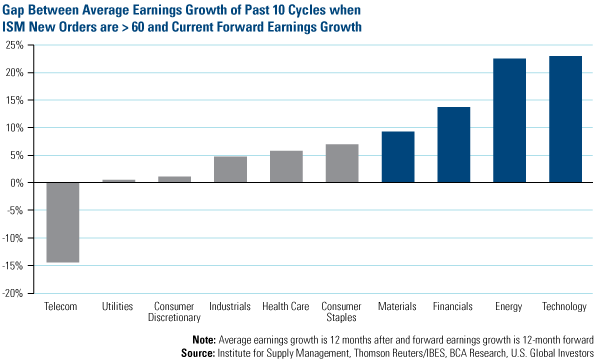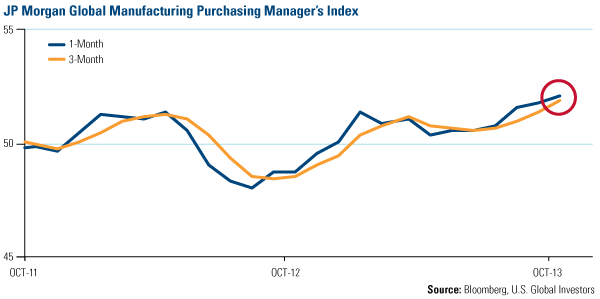For nearly four decades, curious investors have made their way to the Big Easy for a taste of New Orleans and several helpings of advice and perspective at the New Orleans Investment Conference.
Coincidentally, President Barack Obama was in the city recently, speaking at the Louisiana port, which was the setting to showcase his focus on the nation’s economy.
Although the speakers and audience at the Investment Conference will likely have very different political opinions from President Obama, we can all agree with him when he said, “The first thing we should do is stop doing things that undermine our businesses and our economy.”
I, for one, would love to have him read my blog post on this subject that discusses how Texas is becoming the nation’s poster child of how companies, communities, and individuals flourish when allowed to operate under a more business-friendly atmosphere.
This is likely a contrarian view to the folks in the White House, but I think investors benefit from being contrarian and thinking differently. In preparation for my presentations in New Orleans as well as for the Metals & Minerals Investment Conference in San Francisco and the Mines and Money in London in a few weeks, I’ve been pulling together this kind of research that we can all put to use now.
One contrarian idea these days is investing in resources. This is an unloved and underowned area of the market, but there is a case to be made for owning commodities.
Consider the low expectations that analysts have on earnings growth for cyclical industries. BCA Research looked at times when the Institute for Supply Management (ISM) new orders index were more than 60, and calculated the average earnings growth in the following 12 months. The chart shows the gap between past earnings performance and what analysts are anticipating in the next 12 months.
According to BCA, sectors including energy and materials stand out “as having overly bearish expectations compared with their historical performance patterns.”
These analysts are bearish even though the world is experiencing an earth-shaking resurgence in manufacturing. In October, the JP Morgan Global Manufacturing Purchasing Managers’ Index (PMI) grew to an incredible 29-month high, rising to 52.1 in October. A number above 50 indicates expansion in manufacturing, and if manufacturing is expanding, so should the economy.
individual countries, including the data coming out of the U.S., Europe, Japan, China, Brazil, and Australia, more than 90 percent are above 50. Historically, when an overwhelming majority of countries see this level of manufacturing expansion, world-wide growth remains elevated for an extended period of time. Since January 2005, there were two previous times when PMIs remained high: From 2005 until the Great Recession in 2008, and from January 2010 through the middle of 2012.
What’s exciting about this revival in global manufacturing is the relationship between growing strength in PMIs and higher returns from certain commodities, including copper, crude oil, as well as energy and materials stocks. Based on 23 observations from January 1998 to December 2012, there is a high mathematical probability that physical commodities and commodity stocks rise in the three months after the current PMI number rises above its 3-month moving average.
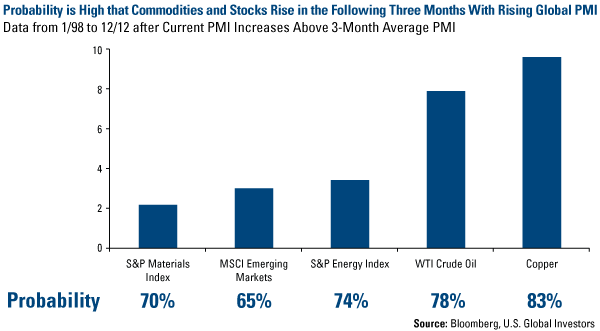
In addition, the Organisation for Economic Cooperation and Development (OECD) Composite Leading Indicator has been heading in a positive direction. This leading indicator provides early signals of turning points in business cycles, including economic activity. Historically, metals performance has closely followed this leading indicator, so as developed markets improved, the S&P GSCI Industrial Metals Index increased.
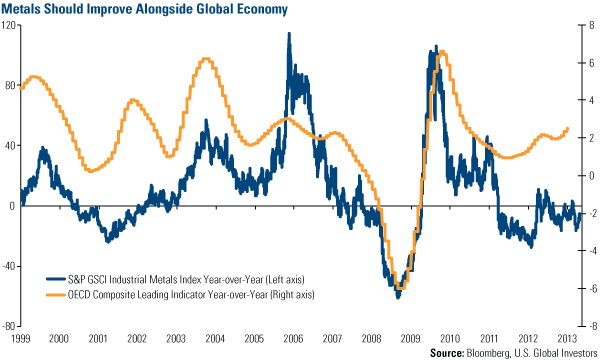
Gold is certainly a contrarian buy these days, but the big story that is affecting the supply of gold is how the physical metal continues to migrate east. According to Paolo Lostritto of National Bank, year-to-date net physical imports by China equate to approximately 50 percent of global mine supply. This is in addition to the reports from GFMS suggesting that China is the world’s largest gold producer with an estimated 400-plus tonnes annually, or roughly 14 percent of global mine supply.
As Portfolio Manager Ralph Aldis likes to say, the gold going into China won’t be coming back to the market. This journey is a one-way trip for gold.
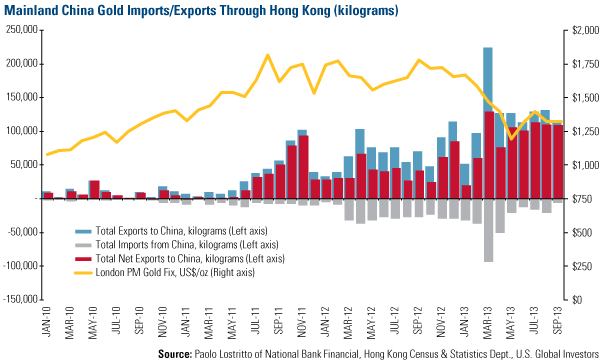
However, Chinese demand for gold is only one ingredient in the very significant Love Trade. With the increasing gold import restrictions in India, the country’s leading position as the world’s biggest buyer of gold is in jeopardy. I’d like to get a firsthand perspective on what is really taking place with the demand for gold and get a flavor for what’s going on, so I’ll be traveling to India later this month.
The ISM manufacturing composite index is a diffusion index calculated from five of the eight sub-components of a monthly survey of purchasing managers at roughly 300 manufacturing firms from 21 industries in all 50 states. The Purchasing Manager’s Index is an indicator of the economic health of the manufacturing sector. The PMI is based on five major indicators: new orders, inventory levels, production, supplier deliveries and the employment environment. The OECD system of Composite Leading Indicators is designed to provide early signals of turning points in business cycles—fluctuation in the output gap, i.e. fluctuation of the economic activity around its long term potential level. The S&P GSCI® Industrial Metals Index provides investors with a reliable and publicly available benchmark for investment performance in the industrial metals market.

